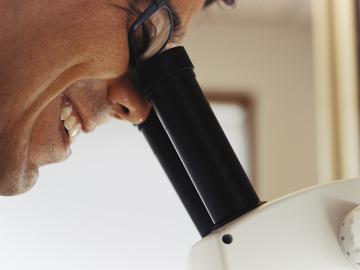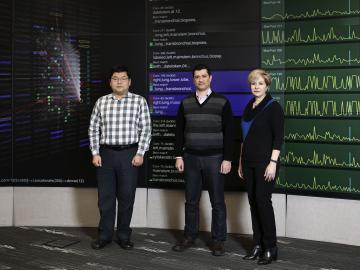
Filter News
Area of Research
- Advanced Manufacturing (10)
- Biological Systems (2)
- Biology and Environment (41)
- Building Technologies (3)
- Clean Energy (118)
- Climate and Environmental Systems (2)
- Computational Biology (2)
- Computational Engineering (2)
- Computer Science (4)
- Electricity and Smart Grid (1)
- Energy Frontier Research Centers (1)
- Fossil Energy (1)
- Fuel Cycle Science and Technology (1)
- Fusion and Fission (15)
- Fusion Energy (2)
- Isotopes (13)
- Materials (69)
- Materials for Computing (18)
- Mathematics (1)
- National Security (11)
- Neutron Science (43)
- Nuclear Science and Technology (15)
- Nuclear Systems Modeling, Simulation and Validation (1)
- Quantum information Science (3)
- Sensors and Controls (3)
- Supercomputing (44)
- Transportation Systems (1)
Date
News Topics
- 3-D Printing/Advanced Manufacturing (41)
- Advanced Reactors (6)
- Artificial Intelligence (30)
- Big Data (14)
- Bioenergy (25)
- Biology (35)
- Biomedical (19)
- Biotechnology (10)
- Buildings (26)
- Chemical Sciences (19)
- Clean Water (12)
- Climate Change (31)
- Composites (13)
- Computer Science (62)
- Coronavirus (10)
- Critical Materials (8)
- Cybersecurity (8)
- Decarbonization (27)
- Education (1)
- Emergency (1)
- Energy Storage (32)
- Environment (60)
- Exascale Computing (7)
- Fossil Energy (2)
- Frontier (10)
- Fusion (17)
- Grid (20)
- High-Performance Computing (32)
- Isotopes (29)
- ITER (5)
- Machine Learning (9)
- Materials (45)
- Materials Science (45)
- Mathematics (3)
- Mercury (4)
- Microelectronics (1)
- Microscopy (17)
- Molten Salt (4)
- Nanotechnology (21)
- National Security (21)
- Net Zero (6)
- Neutron Science (36)
- Nuclear Energy (24)
- Partnerships (11)
- Physics (16)
- Polymers (15)
- Quantum Computing (15)
- Quantum Science (27)
- Security (12)
- Simulation (12)
- Space Exploration (9)
- Statistics (3)
- Summit (15)
- Sustainable Energy (51)
- Transportation (40)
Media Contacts

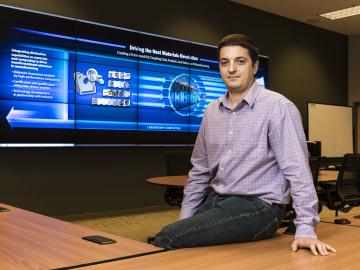
Leveraging his expertise in image processing, sensors, and machine learning, Vincent Paquit is devising a control system for additive manufacturing to produce 3D-printed parts that function as well as conventionally produced objects. Paquit’s research sits at the junction of manufacturing technol...

Vlastimil Kunc grew up in a family of scientists where his natural curiosity was encouraged—an experience that continues to drive his research today in polymer composite additive manufacturing at Oak Ridge National Laboratory. “I’ve been interested in the science of composites si...
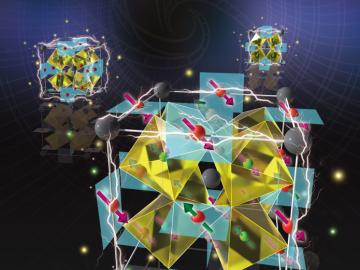


A scientific team led by the Department of Energy’s Oak Ridge National Laboratory has found a new way to take the local temperature of a material from an area about a billionth of a meter wide, or approximately 100,000 times thinner than a human hair. This discove...
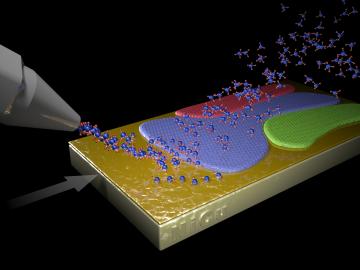
A new method to produce large, monolayer single-crystal-like graphene films more than a foot long relies on harnessing a “survival of the fittest” competition among crystals. The novel technique, developed by a team led by Oak Ridge National Laboratory, may open new opportunities for growing the high-quality two-dimensional materials necessary for long-awaited practical applications.

Last November a team of students and educators from Robertsville Middle School in Oak Ridge and scientists from Oak Ridge National Laboratory submitted a proposal to NASA for their Cube Satellite Launch Initiative in hopes of sending a student-designed nanosatellite named RamSat into...
